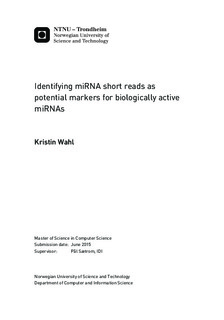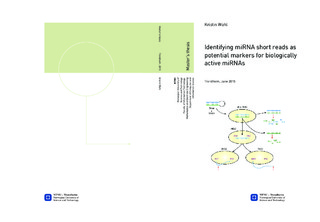| dc.description.abstract | MicroRNAs (miRNAs) are a group of ~22 nt non-coding RNAs that since their discovery in 2001 have been extensively studied, and their post-transcriptional gene-regulatory role in animals and plants have been linked to a number of clinically important diseases. Studies have only regarded miRNA segments of length 16-25 nt, assuming shorter reads to be either Ago2 cleavage or degradation products. The credibility of this assumption was questioned by J. P. Mossin in 2014, when short reads of length ~10 nt was found not compatible with being products of cleavage or known degradation processes. A preliminary study from late 2014 by the author of this master's thesis verified Mossins findings.
This report presents a successful attempt at reproducing both the findings of Mossin and results from the preliminary study, by studying short reads of length 11-15nt. The experiments are extended onto multiple data sets of human and mouse genomes. The report presents a range of analyses discouraging the current assumption regarding short reads, concluding that rather than being remnants of passenger strands, the majority of short reads is actually markers for biologically active miRNAs. A modified model of miRNA activity and degradation is presented, substantiated by the findings of this study. | |

